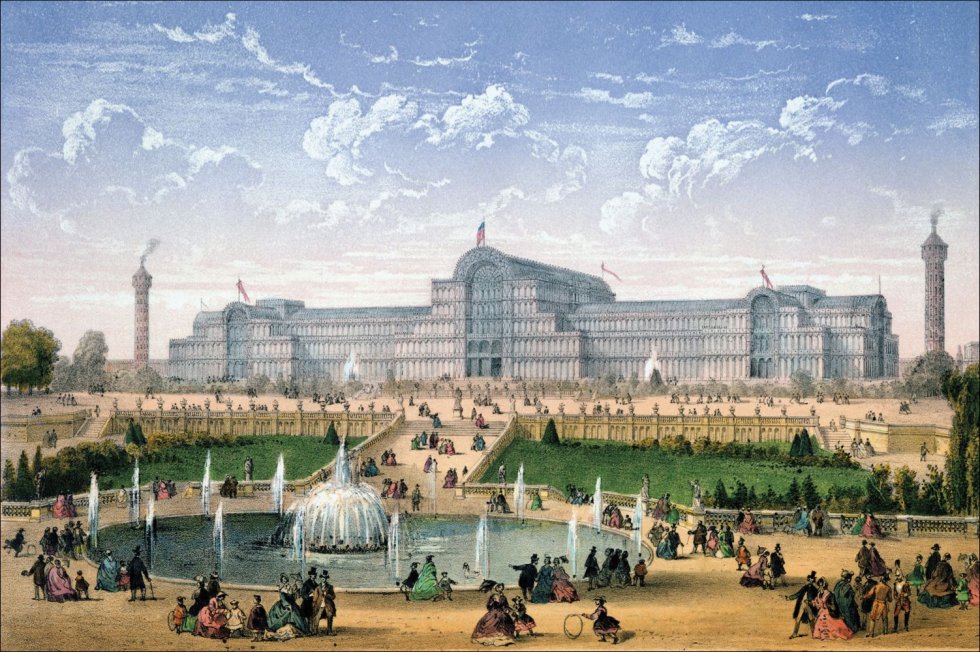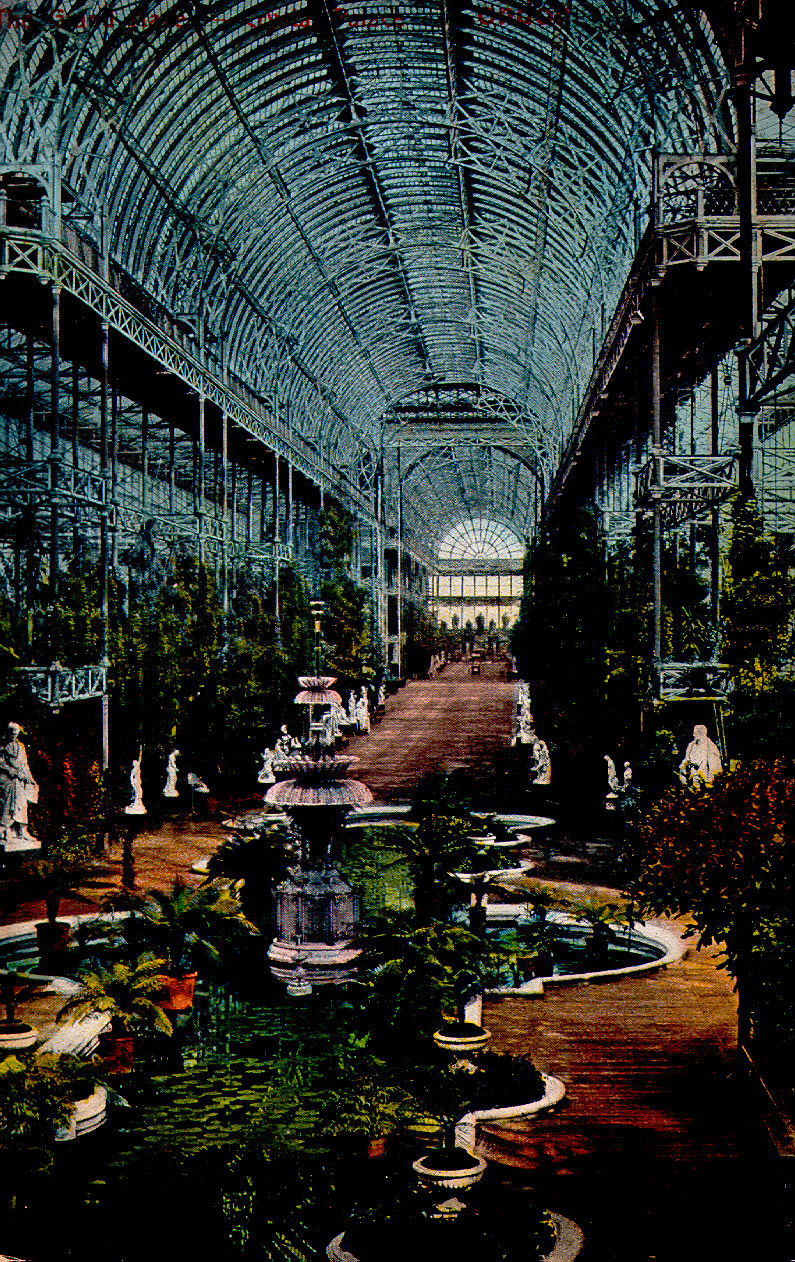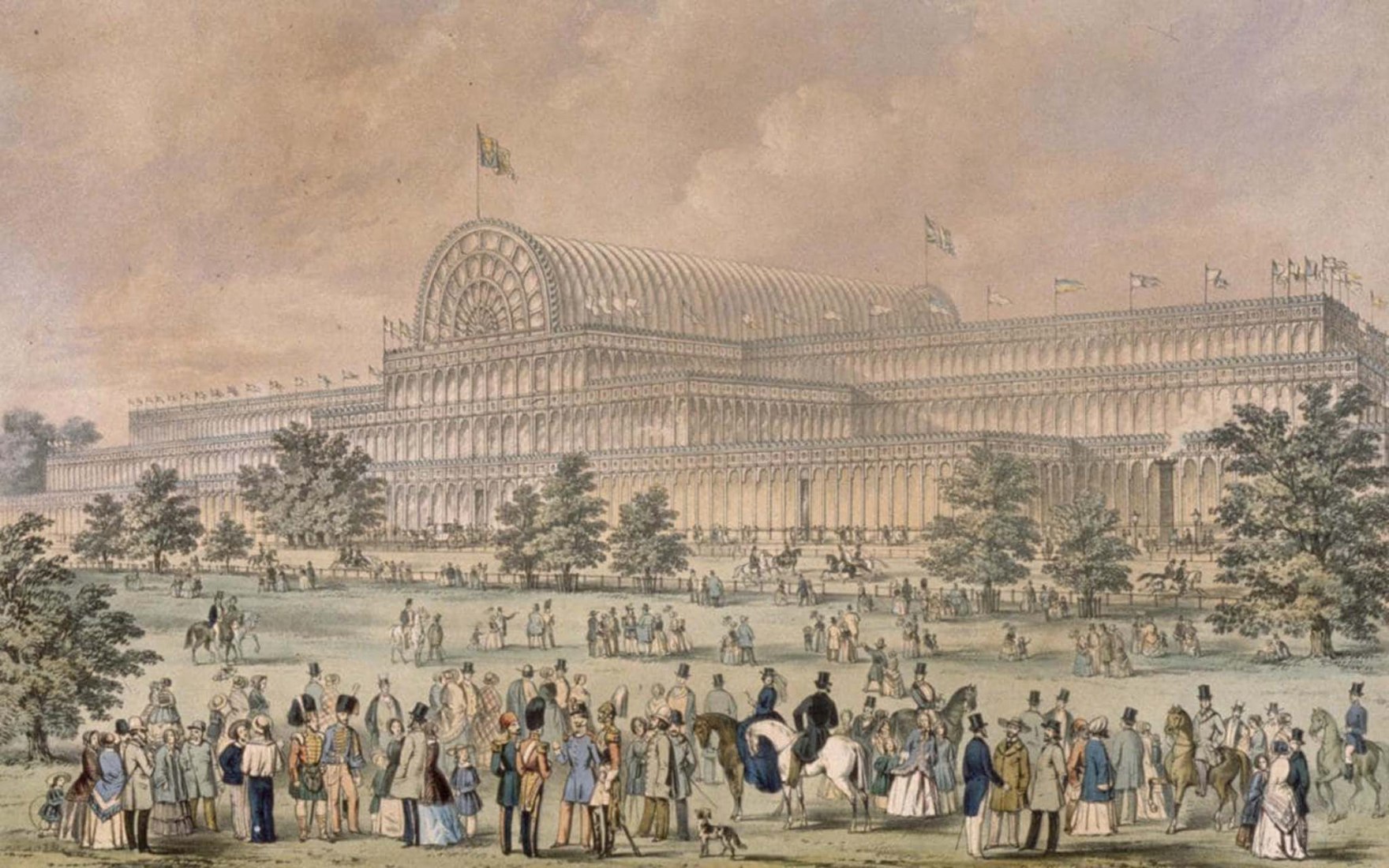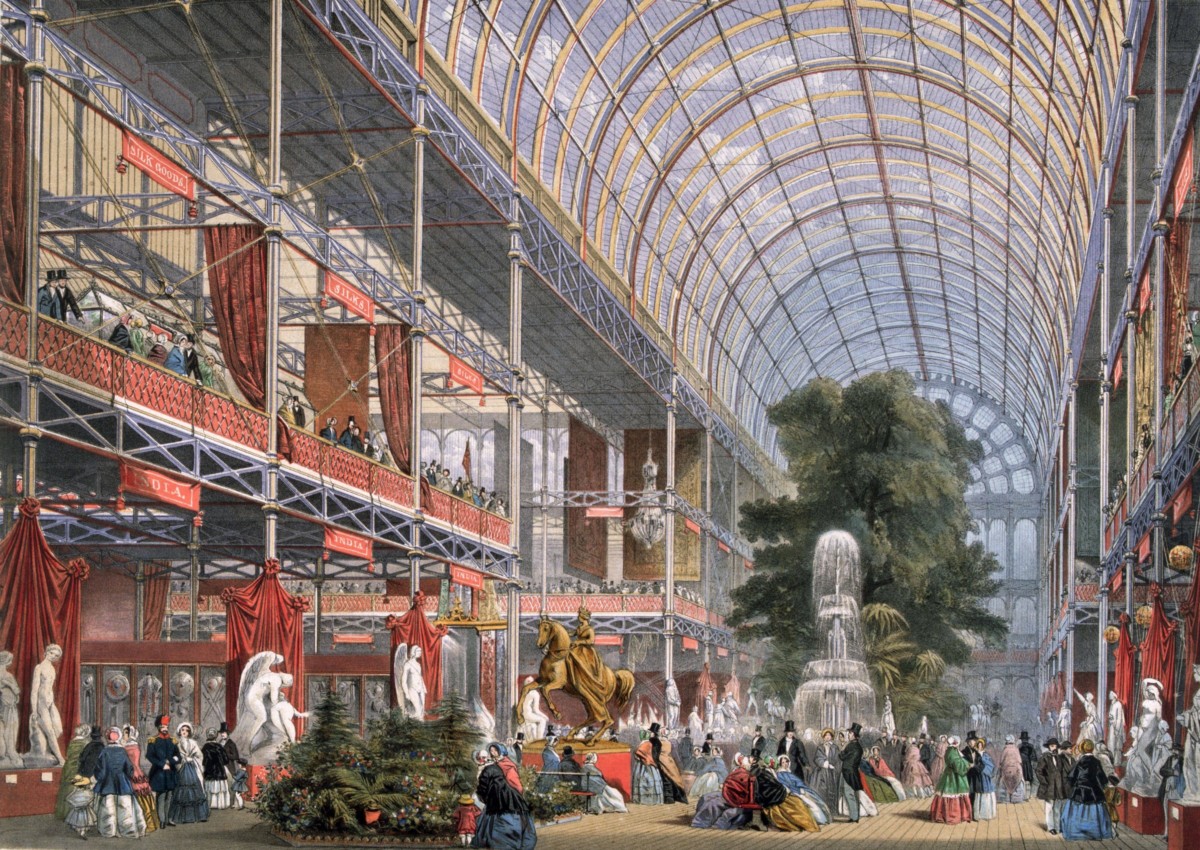
Crystal Palace Joseph Paxton Joseph Paxton 1803 1865 Crystal Palace
English architect Sir Joseph Paxton © Paxton was an English gardener, designer, writer and creator of one of most famous buildings of Victoria's reign, the Crystal Palace. Joseph Paxton.

Contextual Influences in Art & Design The Crystal Palace by Joseph Paxton
Generally regarded as the first modern building, the Crystal Palace was designed by Sir Joseph Paxton (1801-1865) for the Great Exhibition of the Works of Industry of All Nations, the first world's fair, held in Hyde Park, London, during the summer of 1851.

Crystal Palace 1851 Joseph Paxton (18031865) Design Luminy
It was designed by Sir Joseph Paxton for the Great Exhibition of 1851 and rebuilt in 1852-54 at Sydenham Hill but was destroyed in 1936. Crystal Palace, giant glass-and-iron exhibition hall in Hyde Park, London, that housed the Great Exhibition of 1851.

Joseph Paxton. Crystal Palace. London 1851. Google Search Crystal
The Crystal Palace became a symbol of the Victorian age and remains a landmark of British architectural history. Contributions to Horticulture and Public Parks Beyond his architectural achievements, Paxton was also a fervent advocate of horticulture.

urbain Joseph Paxton, The Crystal Palace,... paumée
Sir Joseph Paxton, (born Aug. 3, 1801, near Woburn, Bedfordshire, Eng.—died June 8, 1865, Sydenham, near London), English landscape gardener and designer of hothouses, who was the architect of the Crystal Palace for the Great Exhibition of 1851 in London.

Joseph Paxton Crystal Palace London Palace london, Crystal palace
Joseph Paxton, an English landscaper, designed the Crystal Palace building. Paxton's Crystal Palace architecture was well-lauded for its creative use of materials and graceful simplicity. The Crystal Palace building in London eventually became a symbol of Victorian architecture, and it helped to establish a new standard for exhibition space.

Crystal Palace Description, History, & Facts Britannica
Built in 1851 in London and designed by botanist and greenhouse builder Joseph Paxton (1801-1865), the Crystal Palace is a key building in the history of architecture, not only because of its monumental scale and the many technical innovations involved in its construction, but also because it hosted the first World Expo.

Crystal Palace, le origini Joseph Paxton e il Palazzo di Cristallo
The Crystal Palace by architect Joseph Paxton was built in Hyde Park, London, England in 1851. It was then remodeled in 1854. en.wikiarquitectura.com. Search. Buildings Architects Places Rand. es; en. Crystal Palace structure revolutionary became not only by its size and concept, but also be integrally made of standardized, modular material..

Crystal Palace 1851 Joseph Paxton (18031865) Design Luminy
Designed by Joseph Paxton, the Great Exhibition building was 1,851 feet (564 m) long, with an interior height of 128 feet (39 m), [1] and was three times the size of St Paul's Cathedral. [2]

El primer gigante de hierro y cristal. Crystal Palace por Joseph Paxton
Gallery of AD Classics: The Crystal Palace / Joseph Paxton - 7. Exhibition Center. Share. . Image 7 of 14 from gallery of AD Classics: The Crystal Palace / Joseph Paxton. Part front (left) and.

AD Classics The Crystal Palace / Joseph Paxton Crystal palace
Paxton 's Crystal Palace enclosed full-grown trees in Hyde Park. The Great Exhibition of the Works of Industry of All Nations, also known as the Great Exhibition or the Crystal Palace Exhibition (in reference to the temporary structure in which it was held ), was an international exhibition that took place in Hyde Park, London, from 1 May to 15.

Crystal Palace 1851 Joseph Paxton (18031865) Design Luminy
The Crystal Palace was originally created by Joseph Paxton to house the Exhibition of the Industry of all Nations that was to be staged in Hyde Park, London in 1851. When, after six months, the Great Exhibition closed its doors over six million people had visited it. Joseph Paxton was knighted and public opinion clamoured, without success, for.

Joseph Paxton, Crystal Palace 19th Century Iron Architecture
THE CRYSTAL PALACEthe Great Exhibition of 1851. Designed by Joseph Paxton, the Great Exhibition building was 1,851 feet (564 m) long, with an interior height.

Crystal Palace. Joseph Paxton. World Expo 1851 London. (Source
Abstract. Sir Joseph Paxton (1803-1865), a self-made botanist, designer, and engineer of greenhouses was the principal designer of the Crystal Palace, the structure inside of which the Great Exhibition of 1851, a world's fair of technology and production of the times, was held. At the time, this was the largest international exhibition held.

Joseph Paxton (1803 1865) Crystal Palace 1854 (destroyed 1936
Joseph Paxton, English architect, landscape architect, illustrator, and naturalist, was born on 3 August 1801 into a Bedford peasant family.Now best known for his project for the Crystal Palace, he was a gardener under William George Cavendish at Chatsworth, Derbyshire and, at the age of twenty-three, became head gardener to the Duke and began his work as a builder of large glasshouses.

Joseph Paxton Crystal Palace (18501851) Artsy
The innovative structure was designed by Sir Joseph Paxton (1801-1865) and created almost one million square feet (93,00 square metres) of exhibition space. The building used 500,000 sheets of glass and 4,500 tons of iron.